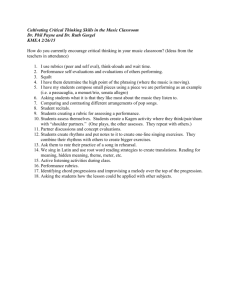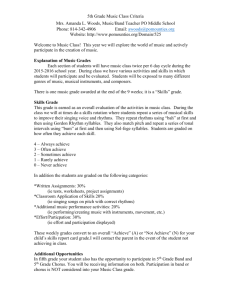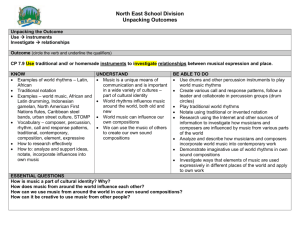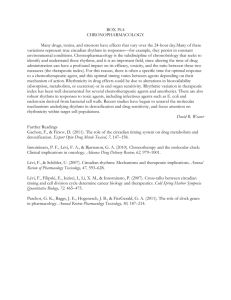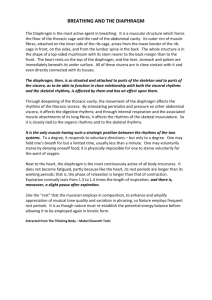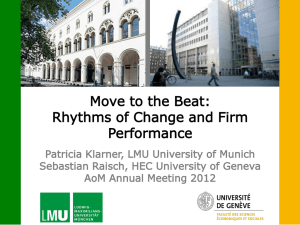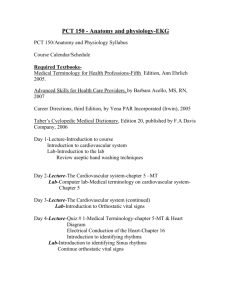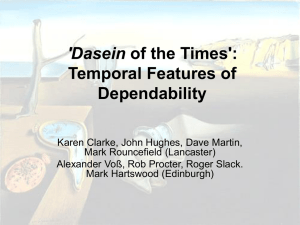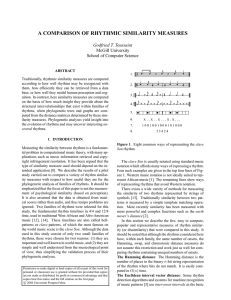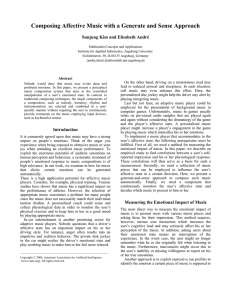Coordination of processing across time
advertisement
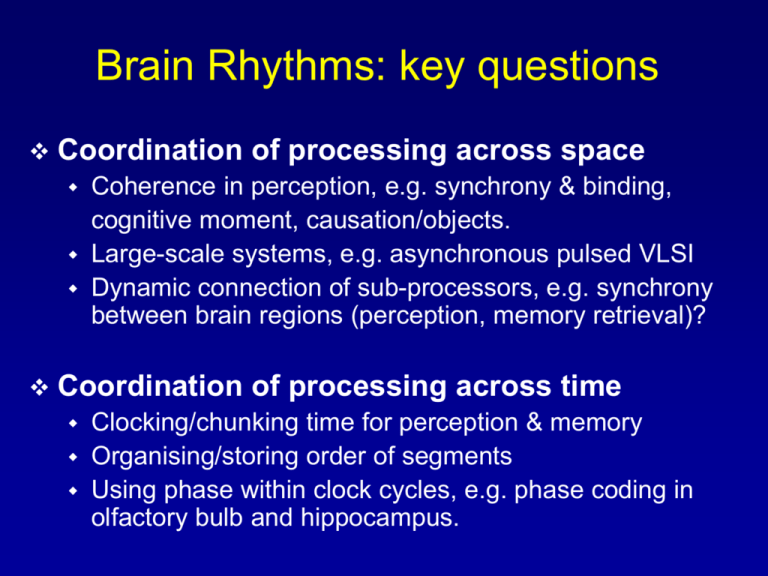
Brain Rhythms: key questions Coordination of processing across space Coherence in perception, e.g. synchrony & binding, cognitive moment, causation/objects. Large-scale systems, e.g. asynchronous pulsed VLSI Dynamic connection of sub-processors, e.g. synchrony between brain regions (perception, memory retrieval)? Coordination of processing across time Clocking/chunking time for perception & memory Organising/storing order of segments Using phase within clock cycles, e.g. phase coding in olfactory bulb and hippocampus. Brain Rhythms: key questions Combining temporal and rate codes Rhythms part of ‘Rosetta stone’ of neural code? Temporal augments rate, e.g. coordination in space & time Temporal and rate parallel & independent (immense power, harder to coordinate?), e.g. hpc phase code for location, rate code for speed, trajectory, objects. Learning/adaption Find equivalent to rate-learning by synaptic modification, e.g. experience-dependent modification of frequencies or dynamics (olfactory cortex?). Interaction with synaptic modification – rate and temporal pattern dependence: parallel or interacting use of same synapses? Hard / software analogues/ implementation. Brain Rhythms: key questions Are rhythms themselves important? Important indicator/side-effect of basic mechanisms BUT not causal themselves. Computational models important & we do have direct effects of synch./oscillations to neural firing, transmission, synaptic modification. These can be causal. V. important to investigate the BEHAVIOURAL/cognitive problems and the NEURAL mechanisms involved. Technological advance in large-scale single-unit recording at least as important as advances in monitoring oscillations. Brain Rhythms: key questions Useful analogies for artificial systems? We can use time-stamps and global clocks already – perhaps this motivates synchrony of rhythms in diverse areas: phase coding in brain provides efficient time-stamp if common rhythm is present. Availability of massive memory and processing capability/ coordination of large-scale connected systems (inc WWW), excitable media might require creative brain-inspired solutions. Brain Rhythms: prospects Recent progress/new questions in both neuroscience re. use of rhythms and temporal processing, possibly needed in future hard/software . Links between synapses, single units, EEG & BOLD with behavior; availability of massive memory and processing capability/ coordination of large-scale connected systems (inc WWW). Novelty of field and wide potential implications => examples from biology might be useful to CS, while CS examples and analysis useful for functional interpretation of neuroscience. But don’t forget the neural mechanisms. Dual rate and phase coding by place cells. Phase relative to EEG theta codes for position within field (O’Keefe & Recce, 1993) Independence of phase and rate Huxter, Burgess, O’Keefe, Nature in press Phase precession occurs on low and high rate runs and in low and high rate cells, across low and high rate sections of place field Firing rate codes for running speed (+trajectory, odors, reinforced stimuli) Hirase et al, Wood et al, Frank et al, Blair et al A weak correlation of phase with rate arises from strong correln of phase with position & rate dependence on position phase rate x phase x rate Rate of phase precession adjusts to length of field Amount and rate of phase precession does not correlate with field skew (r=0.13, p=0.23; r=0.09, p=0.44, n=94).
